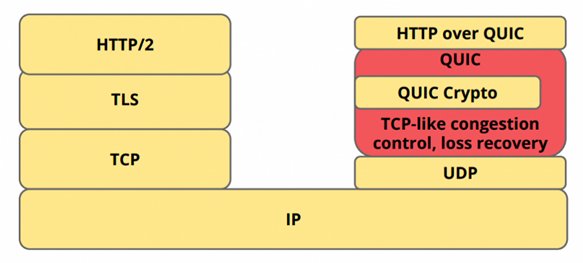It has been a long time since http/2 was introduced to the world. Http/2 promised higher speed, lesser packets, multiplexing, and much more. We know there is a profound difference between http/1.1 and http/2 but many things remain unsolved. That is why IETF in collaboration with google started developing the newest version of http, version 3 based on the QUIC protocol.
Http/3 is completely different because it is UDP (User Datagram Protocol) based. As we know TCP and UDP protocols differ in many ways. And that’s why google came up with their UDP-based QUIC protocol. It takes pros like reliability and flow control from TCP, although it sits on top of UDP.

QUIC has been in use since 2013 experimentally, but now google states they are using QUIC in 90 % of their infrastructure. But why is QUIC such a big deal when it comes to HTTP? Because since 2018 a special group from IETF alongside with google is working on a standardized version. Upgrades and changes are huge, from independent streams always on encryption and better header compression to 0 second handshakes, we can get loading time improvement by 10-20%. You think “It’s not that much …”, well if you see the bigger picture, it is a monstrous improvement. Google claims that 25% of all Internet traffic is going through their infrastructure. You can now see that even 10 % is a huge performance upgrade.
But will it be implemented on-non google web servers and if so, when ? Time will tell, but the truth is that what we know from analysis, half of all web servers don’t even have http/2 yet.
The original autor: Vojta, Junior Network and Linux Administrator, cloudinfrastack

